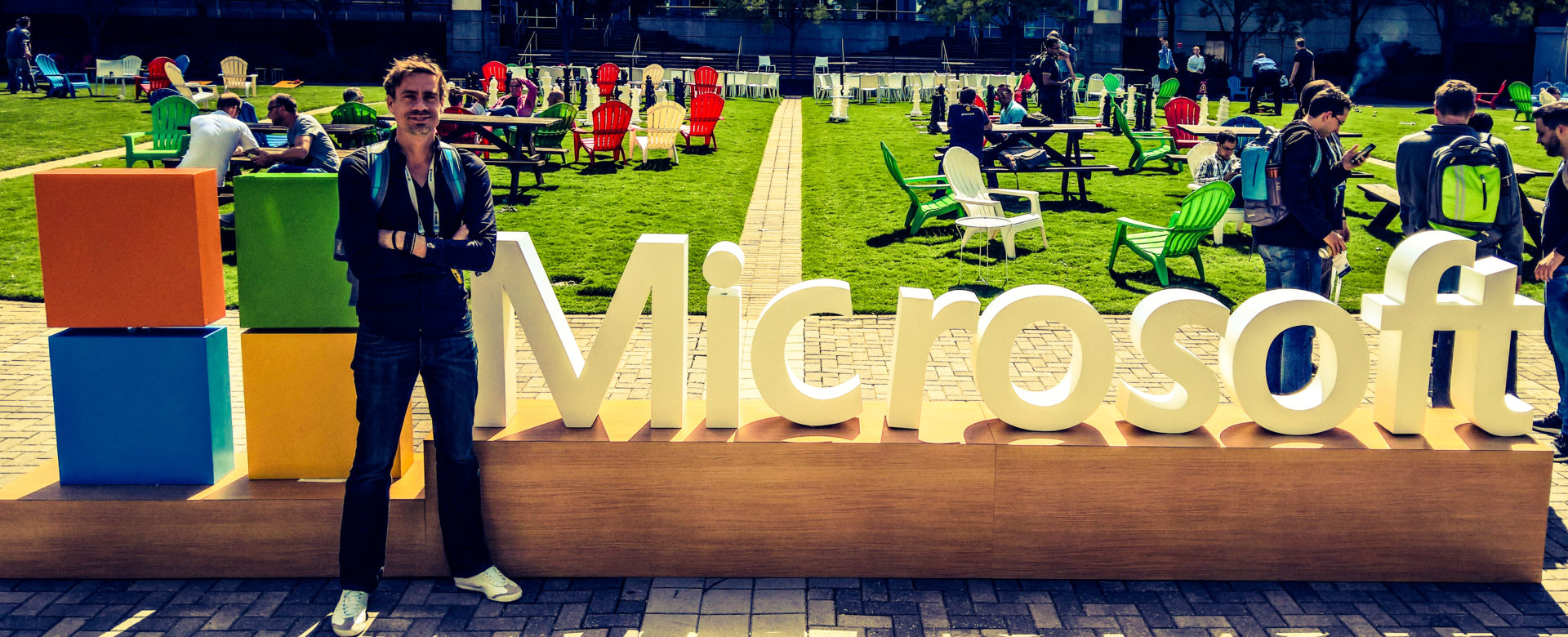This week I went to Microsoft Ignite in Atlanta. After 8 years of going to VMworld this was my first Microsoft congress ever.
Since my visit to Microsoft’s headquarters in Redmond November 2015 I’ve been amazed with the transition this company is going through. They seem to really live up to their mission: to empower every person and organization on the planet to achieve more.
Scott Guthrie, executive vice president for cloud and enterprise, explained that the company wants IT professionals to feel empowered and digitally transform their organizations. Microsoft is focusing on three areas to do this: security, intelligence, and the cloud.
Security
The company announced a range of new security and data analytics features designed to make Azure, Office 365, and Windows run better. More importantly, they were designed, at least in part, to specifically make Windows 10 the safest, most secure place to work. Microsoft may be offering its software on more platforms than before, but while you don’t have to use Windows, the company is suggesting you probably should.
The strongest example of this was the integration of Windows Defender Advanced Threat Protection (WDATP), which uses big data analysis to detect suspicious behavioral patterns that indicate a hacker or other security issue, and Office 365 Advanced Threat Protection (ATP), which works to trap malicious URLs and attachments.
Office 365 ATP is also being extended. It will perform “URL detonation,” wherein a Microsoft system will attempt to visit any suspicious looking URL from within a cloud-based sandbox and then monitor to see if the URL performs any malicious redirections or tries to run any malware. Rolling out to customers now is a new ability to deliver e-mails even before any attachments belonging to those e-mails have been fully scanned using “dynamic delivery.” While the scan is ongoing, a placeholder will be sent instead of an attachment, with the attachment coming through later.
The data collection from Windows and online services has come under fire from privacy advocates, but it does enable a level of monitoring and analysis on a scale that wouldn’t otherwise be possible. With 400 million monthly active Windows 10 devices, Microsoft has a large body of information about what normal and abnormal system behavior looks like and what the tell-tale signs of malware infections and hacks are.
Intelligence
As well as data analysis on a global basis, Microsoft is heavily promoting the use of “intelligence” for business data. “Microsoft Graph” links all your contacts, e-mails, documents, and more. Then according to the relationships between these entities, this initiative powers “Tap” in Word and Outlook (available today) to help you find related documents and other content. This search even includes elements such as tables and graphs from those files in the document or e-mail you’re currently working on.
Cloud
On the cloud front, the big news is the release of Windows Server 2016 and System Center 2016. Windows Server 2016’s new Nano Server install option offers a slim and lightweight Windows Server deployment . It’s designed for virtualized cloud workloads where cutting the install footprint is important to fast provisioning and high VM density.
Windows Server 2016 also ships with Docker-compatible container support. Microsoft announced today that the Commercially Supported version of Docker would be available to Windows Server 2016 customers at no additional cost, with Microsoft providing enterprise support for those users.
A second preview of Azure Stack, the set of software to allow on-premises virtual machine and service provisioning and management in a way consistent with and compatible with the full Azure in the cloud, is now available. The first preview only supported single system deployments; this second preview allows multibox deployments. Microsoft plans to have this production ready by the middle of 2017.
The bigger theme at Microsoft’s keynote? IT guys need to embrace the cloud. Numerous video segments showed real IT people saying how their adoption of cloud technology had made their jobs so much better—free from day-to-day system maintenance, they could work on actually saying “yes” to their users and providing them with the technology to do their jobs more effectively.
With each new update, the desirability of adopting the cloud, and the value it can offer over traditional IT infrastructure, becomes clearer and more compelling. On premises may still be the right choice for some organizations, but they’re going to be increasingly losing out compared to their cloud-using counterparts. If Ignite is any indication, the question is no longer “why use the cloud?”—it’s becoming “why deploy on premises?”
VMware & Amazon
As Amazon and VMware are going to work together and create a hybrid cloud offering (announcement made in October) it isinteresting to see if their prospects are going to embrace this new option of creating a hybrid cloud. I really wonder if this idea will work.
To get updated when a new post has arrived subscribe to the newsletter:
